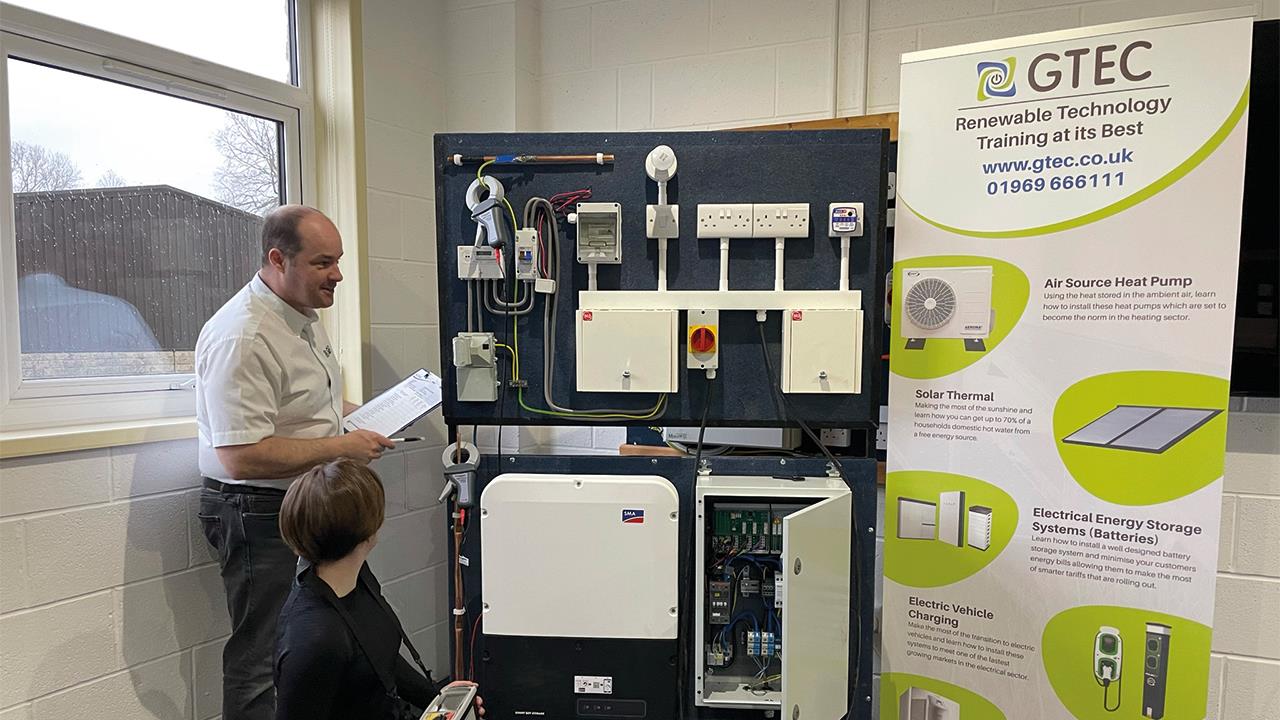

Griff Thomas, Managing Director of GTEC, looks at the role battery storage can play in establishing fully integrated off-grid heating systems.
Roughly 15% of homes in the UK are not connected to the National Grid. That’s over two million properties. Most rely on oil for heating and hot water but, as battery storage technology develops, electricity is becoming an increasingly popular and practical option for those looking to use renewable energy sources.
The decision to go off-grid has become more popular in recent years and it offers substantial perks in terms of saving money, cutting reliance on the utility companies, energy security and, if renewable energy sources are used, a sense of contributing to a greener way of living.
Battery benefits
Batteries or Electrical Energy Storage Systems (EESS), to give them their proper name, enable homeowners to regulate the energy generated by renewable sources, so that it can be used when it is required.
Take solar, for example. Harnessing the power of the sun to create energy is effective during daylight hours but, because the energy produced by a photovoltaic system isn’t consistent, it’s useful to be able to store the electricity generated to use in the evening and on less sunny days.
There’s also the potential to feed any excess electricity produced back into the National Grid. The government’s Feed in Tariff scheme closed to new applicants in 2019, but its new Smart Export Guarantee scheme, launched last year, pays for excess renewable energy produced and exported back to the grid.
How EESS contributes
The most popular EESS are lithium-ion batteries, which make up 90% of the global battery storage market. Compared to other options, lithium-ion batteries have high energy density and are lightweight, making them practical for domestic use.
Although there are substantial upfront costs, in recent years the technology has become more affordable, resulting in a growth in the market. Setup costs for renewables are higher than more traditional systems, but remember that the running costs are lower and the fact that the energy produced is free. Potentially, there will be no more utility bills.
Apart from providing power for lighting and other electrical appliances, the energy stored by the EESS system can be used to power heat pumps, which require very little electricity to operate. The government is particularly keen on heat pumps and has highlighted them in its Future Home Standards policy as the potential front-runner to replace the use of gas boilers.
With an upturn in demand for EESS systems, there follows an inevitable growth in demand for those who can fit them. Qualified electricians, with specialist training in battery installation, are required for the fitting and maintenance of EESS systems UK-wide.
How to train
At the moment, GTEC is one of the only training centres in the UK to offer a Level 3 qualification in the design, installation, and commissioning of electrical energy storage systems.
The award, which we designed in collaboration with LCL Awards, is aimed at practicing electricians, electrical technicians, and engineers with experience of electrical installations. The qualification has been drawn up in accordance with the current Institution of Engineering and Technology Code of Practice, and covers the installation of EESS units in individual dwellings, multi-occupancy residential buildings, as well as commercial and industrial sites.
It’s a two-day course, delivering the theory and practical know-how enabling candidates to apply the regulations and guidance involved in the specification, installation, commissioning, and maintenance of battery storage, in accordance with the Code of Practice.
Now that improved, more affordable battery technology is available, the missing link is in place for fully integrated and reliable energy generation. Self-sufficiency in energy production is now a reality for those looking to step aside from the grid
If you'd like to keep up-to-date with the latest developments in the heating and plumbing industry, why not subscribe to our weekly newsletters? Just click the button below and you can ensure all the latest industry news and new product information lands in your inbox every week.